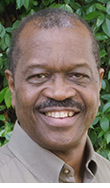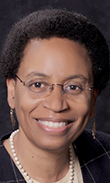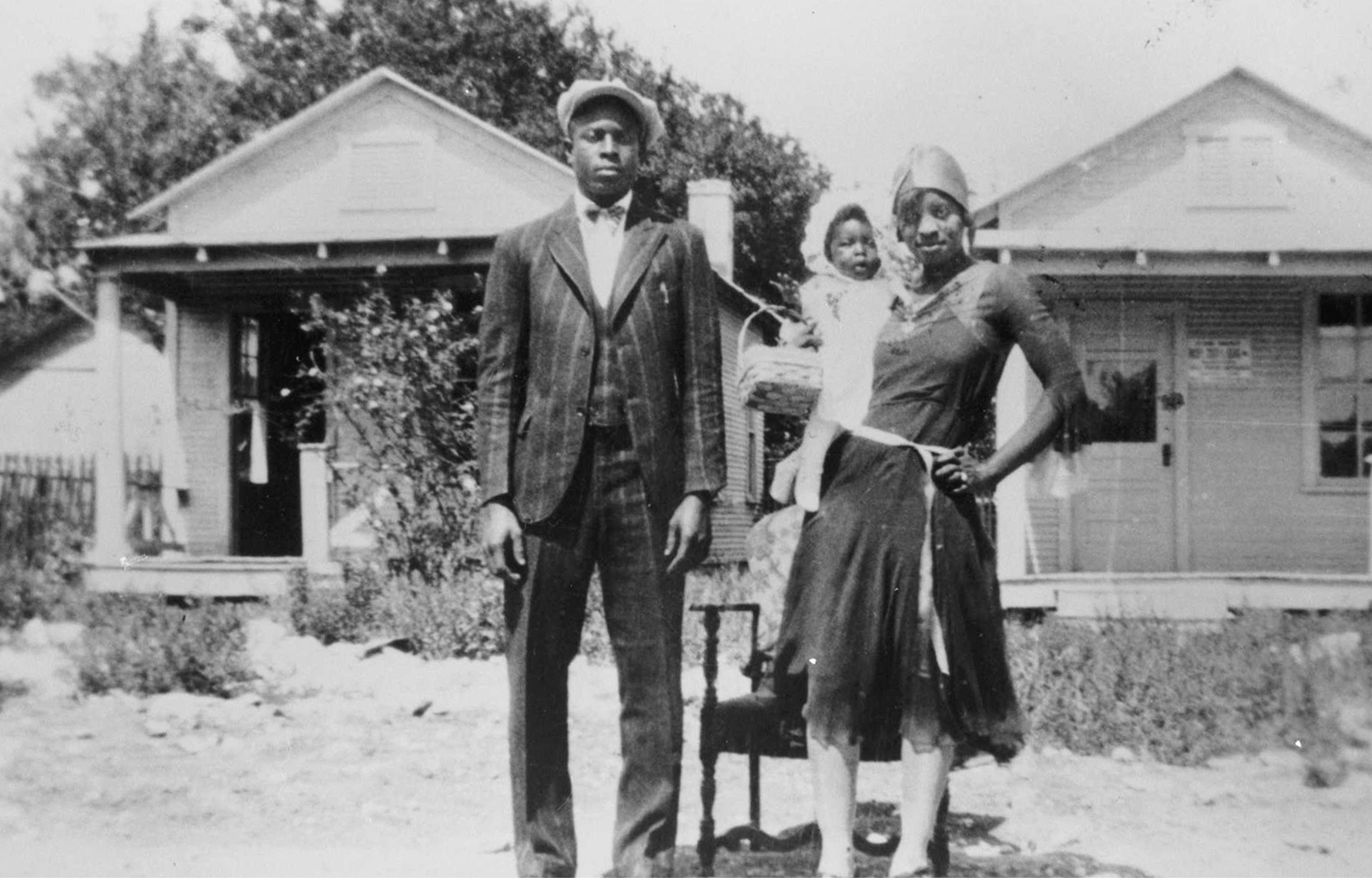CHC symposium focused on African-American heritage

Everett Fly

Donna Carter

Eureka Gilkey

Priya Jain

Assata Richards

Andrea Roberts

Gwendolyn Webb Hasan

Brent Fortenberry

Kevin Glowacki
Preservation of Texas’ historic African-American communities, repositories of black heritage and culture that are increasingly imperiled by natural and economic threats, was the focus of the Feb. 16-17 Texas A&M [Center for Heritage Conservation’s] (http://chc.arch.tamu.edu/) 19 th Annual Historic Preservation Symposium at Texas A&M University.
“Many historically significant African-American communities are at risk because they are located in areas susceptible to flooding, chronic disinvestment, and gentrification,” said Andrea Roberts, a symposium lecturer and Texas A&M assistant professor of [urban planning] (http://laup.arch.tamu.edu/) who is creating a statewide black settlement inventory.
Symposium speakers discussed why preserving these communities requires a “full court press” — an interdisciplinary approach that addresses historic sites and buildings and promotes their sustainable development, equity, and resilience.
None of these issues can be discussed in isolation if African-American communities in Texas are to survive and thrive, said Roberts.
“Speakers also addressed fundamental issues of why we preserve, what we preserve, and the best ways to do that both now and in the future,” said Kevin Glowacki, interim director of the CHC. “The symposium, which showcased several CHC faculty fellows’ research and teaching projects, is the start of a much larger conversation about the entire state’s history and heritage.”
Keynote open to public
The symposium’s keynote address, “African-American History in Texas: Context for Preserving and Conserving Culture and Place,” was presented by [Everett Fly] (http://www.everettfly.com/) , an award-winning, San Antonio-based architect, landscape architect, preservationist, and nationally recognized leader in the drive to preserve the integrity of African-American-associated structures and history.
Fly’s keynote, was sponsored by a Notable Lecture Grant from the [Melbern G. Glasscock Center for Humanities Research] (http://glasscock.tamu.edu/) at Texas A&M.
His numerous honors include the 2014 [National Humanities Medal] (https://www.neh.gov/about/awards/national-humanities-medals) , which recognizes individual, group, and institutional projects that preserve and expand Americans' access to important resources in the humanities.
In a statement from the White House that accompanied the award, Fly was cited for his tireless work winning historical recognition for previously forgotten or unrecognized communities central to African-American history.
Fly believes that preservation is about more than the past.
“When different groups of people understand how their ancestors contributed and worked together in the built environment, they realize that no one person did everything, such as make the bricks, the glass, and the nails,” he said. “It takes a whole team of folks to put it together.”
Cultural landscapes, he added, are too often acknowledged and interpreted strictly in terms of individual disciplines of archaeology, anthropology, or genealogy.
“These places demand interdisciplinary attention that includes community planners, landscape architects, historic preservation specialists, craft masters and artists,” he said. “The sites raise many questions, emotions, concerns, lessons and opportunities that affect a wide cross section of America, not simply African-Americans.”
A reception, open to symposium registrants, took place after Fly's keynote at the [Brazos Valley African-American Museum] (https://www.google.com/maps/place/Brazos+Valley+African+American/@30.6789868,-96.3697212,17z/data=!4m5!3m4!1s0x864681a71cb8b40b:0x673cb75bf692e725!8m2!3d30.6789868!4d-96.3675325) in Bryan.
Saturday lineup
The symposium resumed Saturday, Feb. 17, in Langford Architecture Center’s Preston Geren Auditorium with a lineup of prominent lecturers.
The speakers included Andrea Roberts , Texas A&M assistant professor of urban planning, who presented " Hacking Heritage: Lessons Learned from Grassroots Preservationists .”
Roberts focuses on planning history and preservation in settlements founded by formerly enslaved Africans in the Americas, She brings to her scholarship 12 years’ experience in community and economic development in Philadelphia and Houston.
Gwendolyn Webb-Hasan , associate professor of education and human development at Texas A&M, presented " African-American Heritage in the Brazos Valley .”
Her research focuses on culturally responsive leadership, pedagogy, and teacher development; the disproportionate representation of African-American learners in special education; culturally responsive family and community engagement, and the exploration of academic achievement and sociopolitical contexts as they relate to African-American girls.
She teaches graduate courses in culturally responsive leadership, urban school administration, instructional leadership development, and home, school and community partnerships.
Donna Carter , Austin’s first female, licensed African-American architect, presented " A Conversation: Seeking Praxis when Preserving African-American Places ."
She is the head of [Carter Design Associates] (http://carterdesign.net/) , a multidisciplinary architectural, preservation and planning firm that has provided professional services to clients in Texas for more than 30 years.
Her firm’s recent projects include restorations at several Austin public pools, San Marcos’ historic [Cephas House] (http://www.statesman.com/news/local/san-marcos-seeks-rent-cephas-house-for-community-activities/z3rkA1GtuqTEr3DCGpmQcP/) , and design projects at Central Texas churches and public facilities.
Eureka Gilkey, executive director of [Project Row Houses] (https://projectrowhouses.org/) in Houston, Lynn Henson , planner manager, city of Houston, Priya Jain, Texas A&M assistant professor of architecture , and Assata Richards, adjunct professor of sociology at the University of Houston and the director of the Houston-based [Sankofa Research Institute] (http://sankofaresearchinstitute.org/) , presented “ Preservation Comes of Age: Neighborhood Change in Houston's Third Ward .”
Presenters discussed events in Houston’s Third Ward, a predominantly African-American community that traces its origins to Houston’s founding in 1836.
Roundtable discussion
The symposium also included " The Brazos Valley Manifesto: What's Next for Preservation of African-American Places in Texas?" a roundtable discussion moderated by Andrea Roberts and Brent Fortenberry , Texas A&M assistant professor of architecture.
Event hosts also included the [Brazos Valley African-American Museum,] (http://www.bvaam.org/) the Texas A&M departments of [anthropology] (https://anthropology.tamu.edu/) , [architecture] (http://dept.arch.tamu.edu/) , [construction science] (http://cosc.arch.tamu.edu/) , [visualization] (http://viz.arch.tamu.edu/) , and the College of Architecture.
Richard Nira
rnira@arch.tamu.edu
Previous post
Tags
- arch gallery
- architecture
- building a better texas
- chc gallery
- coa gallery
- diversity
- events
- heritage conservation
- history
- interdisciplinary
- land development
- landscape architecture & urban planning
- laup gallery
- lectures
- planning
- rss
Related Posts

Feb. 9 conference showcased sustainable African land projects

Students rethink development plans for University Dr.

Oct. 23 symposium spotlighted college, faculty research

Heritage symposium to focus on Alamo conservation efforts

College honors 6 outstanding alumni at Nov. 15 ceremony
Follow Us
Facebook Twitter Vimeo Youtube Flickr RSS
Recent Posts

Planning prof heads study of disaster housing aid

A message from the dean

Former student remembered as expert planner

Leading educator named new head of Architecture Dept.





_thumbnail_small.png)
